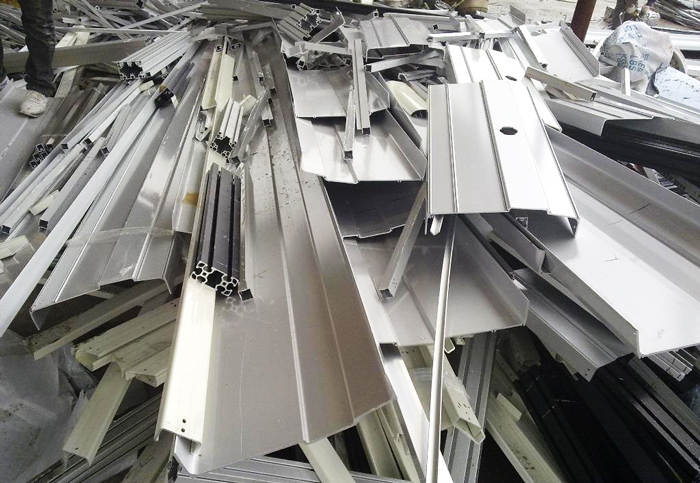Aluminum alloy crushing and crushing treatment
Aluminum alloy is a kind of aluminum alloy synthesized by adding a certain amount of other metals to metal aluminum, which is a widely used light metal material. In addition to the general properties of aluminum, adding different metals to aluminum alloys can produce different metal properties. The density of aluminum alloy is 2.63~2.85g/cm, and its strength σ B is 110~650MPa, with a specific strength close to that of high alloy steel and a specific stiffness higher than that of steel. It has good casting and plastic processing properties, and the material has good conductivity, thermal conductivity, corrosion resistance, and weldability. It can be used as a structural material and is widely used in aerospace, transportation, construction, electromechanical, light chemical, and daily necessities.

1. Classification of aluminum alloys
Different types of pure aluminum have different metal properties by adding different metals, including the AL x Cu (2000 series), AL x Mn (3000 series), AL x Si (4000 series), AL x Mg (5000 series), AL x Mg x Si (6000 series), AL x Zn x Mg (7000 series), etc. Among them, 6060 aluminum and 6060 aluminum are the most commonly used aluminum alloys, with magnesium and silicon as the main alloying elements and Mg2Si as the strengthening phase.
a. 6061 aluminum alloy
6061 alloy aluminum belongs to the heat treatment strengthening alloy, which has good formability, weldability, machinability, medium strength, and can still maintain good operability after annealing.
b. 6063 aluminum alloy
6063 aluminum alloy is widely used in the framework of building aluminum doors, windows, and curtain walls. In order to ensure high wind pressure resistance, assembly performance, corrosion resistance, and decorative performance of doors, windows, and curtain walls, the requirements for the comprehensive performance of aluminum alloy profiles are far higher than the industrial profile standards.
2. Main uses of aluminum alloys
1. Industrial use, such as equipment hood, equipment rack fence, non-standard aluminum profile frame, aluminum profile conveyor belt, automated mechanical equipment, assembly line workbench, medical equipment, medical stretcher bed frame, etc.
2. In terms of building decoration, including various doors, windows, and curtain walls, such as interior and exterior decoration, construction templates, composite doors and windows, composite aluminum panels, etc. Due to its corrosion resistance, aesthetics, noise resistance, and good reflectivity of light and heat, aluminum alloy materials are widely praised in building decoration.
3. On home and car equipment, such as tables and chairs, home decorations, bicycle connectors, external car frames, etc.
In terms of heat dissipation fins, due to the excellent performance of aluminum shaped radiators, they are a very good material for radiators.
3. Recycling process of waste aluminum alloy
a. Use a metal shredder to shred aluminum alloy, as shown in the following video:
b. Use a metal crusher to directly crush aluminum alloy, as shown in the following video:
The recycling value of waste aluminum alloys is high. When recycling, the first step is to classify and stack the waste aluminum, such as pure aluminum, aluminum alloys, cast aluminum alloys, and mixtures. The waste aluminum mixture needs to be disassembled to remove impurities such as scrap iron, plastic, copper, paint, etc. from the aluminum alloy material, and undergo multiple sorting processes such as cleaning, crushing, magnetic separation, and self retention sorting.



